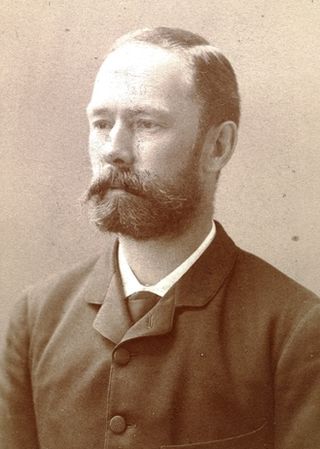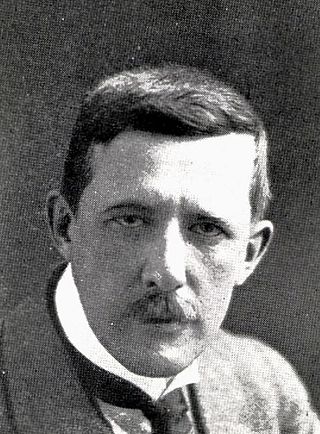
The Skanke family is a former Norwegian noble family. [1]

The Skanke family is a former Norwegian noble family. [1]
According to the Skanke Family Association in Norway (Skanke-foreningen i Norge), the family can trace its roots to Jemtland in the 14th century with a high degree of certainty, and with less certainty to the Isle of Man before that. The association's shield depicts a blue-armored leg (or shank), spurred in gold, on a field of white. [2]
The family's use of a leg motif in its heraldry has been compared with the Manx triskelion. Manx historian George Vaughan Chichester Young, O.B.E., supposed from that similarity that the family descends from the rulers of Manx (who lost their kingdom as a result of the Treaty of Perth and the 1275 loss of the Battle of Ronaldsway). He wrote in his work A Brief History of the Isle of Man:
The rebellion {of 1275} was, however, abortive and resulted in some members of the royal family emigrating to Norway, where their descendants are still to be found in the Norwegian family of Skankes, the Swedish family of Skunck(e)s and the Danish family of Barfods. The emigrants took with them as their Arms "the three legs", which had been the Royal Arms of the Sudreyan Kings since about the middle of the 13th century. These Arms (a modification of the ancient Indo-Germanic sun symbol) were simplified in Norway and Sweden to one leg and in Denmark to three bare feet, and later to one bare foot
— Young, G.V.C.: A Brief History of the Isle of Man, The Mansk-Svenska Publishing Co. Ltd., Peel, Isle of Man, 2001: p. 12
The Kalmar Union was an unstable creation, often shook by struggles between the pro-Danish and pro-Swedish factions. These conditions would lead the family into battle, with relatives ending up on opposing sides in a war of succession.
In 1452, knight Örjan Karlson Skanke from Jemtland is mentioned as agent of Charles VIII of Sweden. Ørjan was sent to conquer Trondheim, the ancient centre of Norway's kings. Control of this vital city would have greatly strengthened Charles' claim to the throne. The answer from the Danish side came with knight Ørjan's own distant relatives. Olav Nilsson (ca. 1400–1455) was commander of Bergenhus Fortress in Bergen. Olav Nilsson and his brother Peder, marching up from the south and pushing Ørjan out of Trondheim. The same thing happened all over again in 1453 with Ørjan seizing Trondheim and Olav and Peder driving him out once more. This second battle finally concluded the conflict over succession and ended the battles between knights of the Skanke family. [3]
The pro-Danish side, led by the knight Olav Nilsson and his brother and fellow knight, Peder Nilsson, came out on top in this struggle. The two brothers belonged to Norwegian pro-Danish forces which repeatedly defeated the Swedish forces of Charles VIII in the area around Trondheim. After their participation in the fighting the brothers received high ranking positions in the administration of Norway. [4]

Only a few years after becoming the main royal official in Bergen, Olav lost his position due a conflict with the Hanseatic League. The League pressured the Danish king into firing Olav after he had made attempts at reducing their autonomous status in the city. In response to this, Olav carried out a prolonged private war of piracy and raiding against both the League and Sweden, in the end forcing the Danish king into restoring his former position. After returning to Bergen, however, Olav was murdered by the League's men, together with his young son and his brother Peder, as well as the bishop of Bergen and many monks in Munkeliv Abbey which was burned. After these murders the family, led by Olav's widow Elise Eskildsdatter (d. ca. 1492) and her children, continued to fiercely battle the League through piracy until receiving compensation and restoration of status some years later. [5] [6]
The Skanke Family Association in Norway is open to any person holding the Skanke or related surnames. It encourages genealogical and prosopographical research into the family.

Olaf III or Olaf Haraldsson, known as Olaf the Peaceful, was King of Norway from 1067 until his death in 1093.

Jonas Danilssønn Ramus was a Norwegian priest, author and historian. He is principally known as an author of religious and historical writings.

Skancke is a Norwegian family name with some slightly different spellings as Skanke, Schanke, Schanche and others. It is not proved whether all persons with those names descend from the same family line in the Middle Ages. One famous Skancke family is from the 17th Century situated in the old mining town of Røros in Mid-Norway.

Olav Nilsson Skanke was a Norwegian nobleman, knight and privateer. He was a member of the Riksråd and served as commander of Bergenhus Fortress.

Ingerd Ottesdotter (Rømer) was her era's wealthiest landowner in Norway. She was the ultimate heiress of the noble Rømer family and a political intriguer. Lady Ingerd is noted for having orchestrated her powerful sons-in-law to support her goals. Her fame was the inspiration for Henrik Ibsen's play Lady Inger of Ostrat.

Yngvar Nielsen was a Norwegian historian, politician, geographer and pioneer of tourism in Norway.

Munkeliv Abbey was a Benedictine abbey located at Nordnes in Bergen, Norway. It was one of the oldest monasteries in Norway, and also one of the wealthiest and best-documented. There are no visible remains today.

Olav Engelbrektsson was the 28th Archbishop of Norway from 1523 to 1537, the Regent of Norway from 1533 to 1537, a member and later president of the Riksråd, and a member of the Norwegian nobility. He was the last Roman Catholic to be the Archbishop of Norway before he fled to exile in 1537.

Jens Tillufssøn Bjelke was a Danish-Norwegian nobleman and a feudal lord of Jemtland, Norway, was originally from Danish Skåne. Jens Tillufssøn Bjelke was one of several notable Danes who acquired land, resided permanently in Norway, became thoroughly Norwegian and founded new Norwegian noble families, which replaced the old nobility of the first rank. He was the grandfather of Chancellor Jens Ågessøn Bjelke and great-grandfather of Governor Jorgen Bjelke.

Ferdinand Julian Egeberg was a Norwegian military officer, chamberlain and timber merchant. He is remembered for having founded the sports prize Egebergs Ærespris, which was regarded as the highest achievement in Norwegian sport.

Waldemar Stoud Platou was a Norwegian businessperson. He had a long career in the brewery industry.
Alf Bøe was a Norwegian art historian, educator, curator and author.

Adolf Bredo Stabell Greve was a Norwegian architect.
Events in the year 1612 in Norway.
Events in the year 1455 in Norway.
Elise Eskilsdotter was a Norwegian noble. Elise was the daughter of Eskild Ågesen and Elisabeth Jakobsdatter Hegle. Her father was a knight from Scania. Around 1420, she married the Norwegian nobleman Olav Nilsson who was a member of the noble Skanke family.
Hans Kruckow was a knight and a royal councilor in Norway.
The Battle of Florvåg was a naval battle that was fought on 3 April 1194 between King Sverre Sigurdsson, leader of the Birkebeiner party, and Sigurd Magnusson, the Eyjarskeggjar party pretender. Although there had been previous revolts during Sverre's reign following his usurpation of the throne in 1184, the revolt in support of Sigurd Magnusson became far more threatening than the attempts of previous pretenders. In a larger context, the battle was part of the century-long civil war era in Norway.
Henrik Kalteisen or Heinrich Kalteisen, O.P., S.T.D., was a German theologian and, from 1452 to 1458, the 24th Archbishop of Nidaros in Norway.
Leif Thor Olafsson, also Thorleiv Olavsson was a Roman Catholic prelate who served as Bishop of Viborg (1440–1451) and Bishop of Bjørgvin (1451–1455).